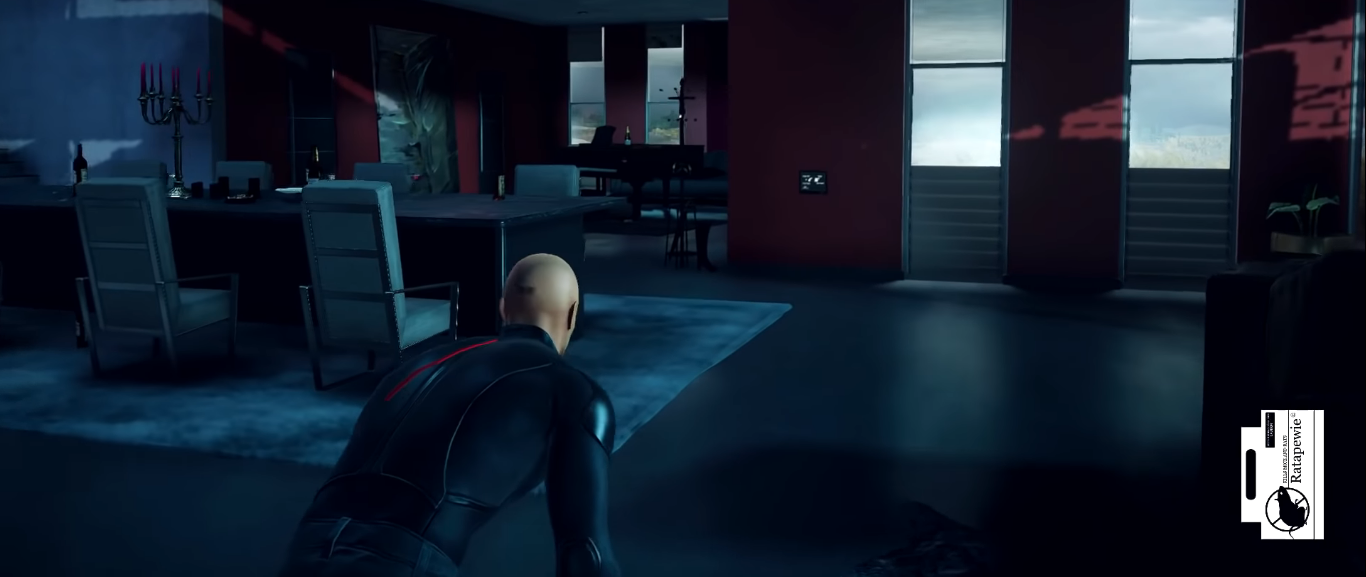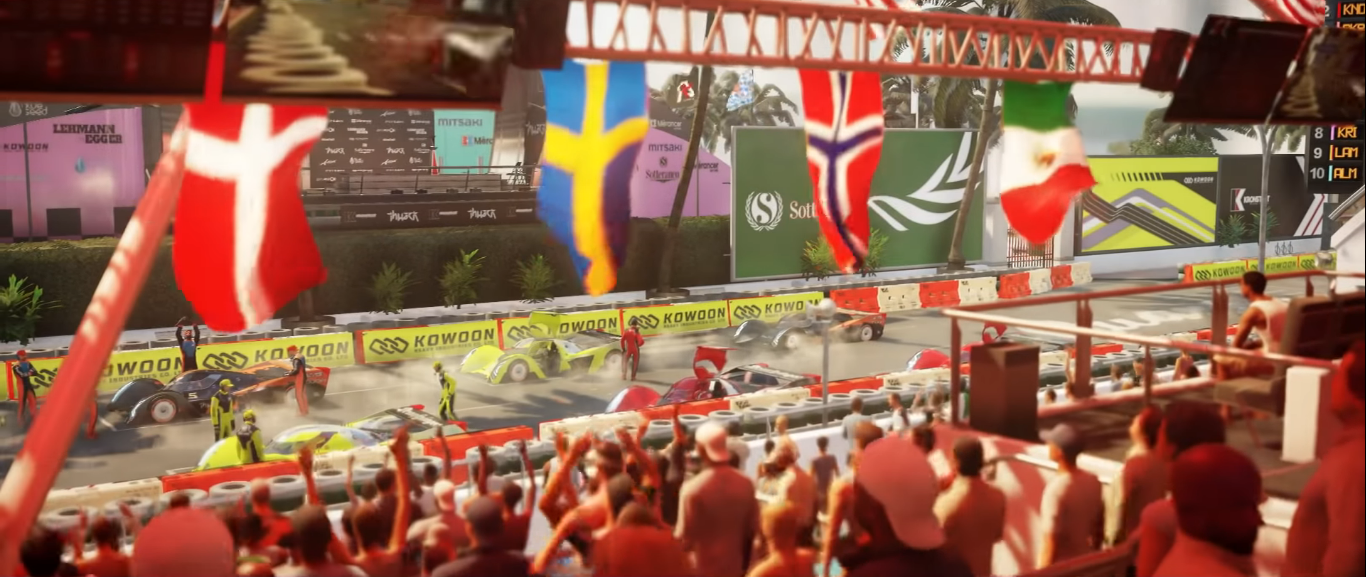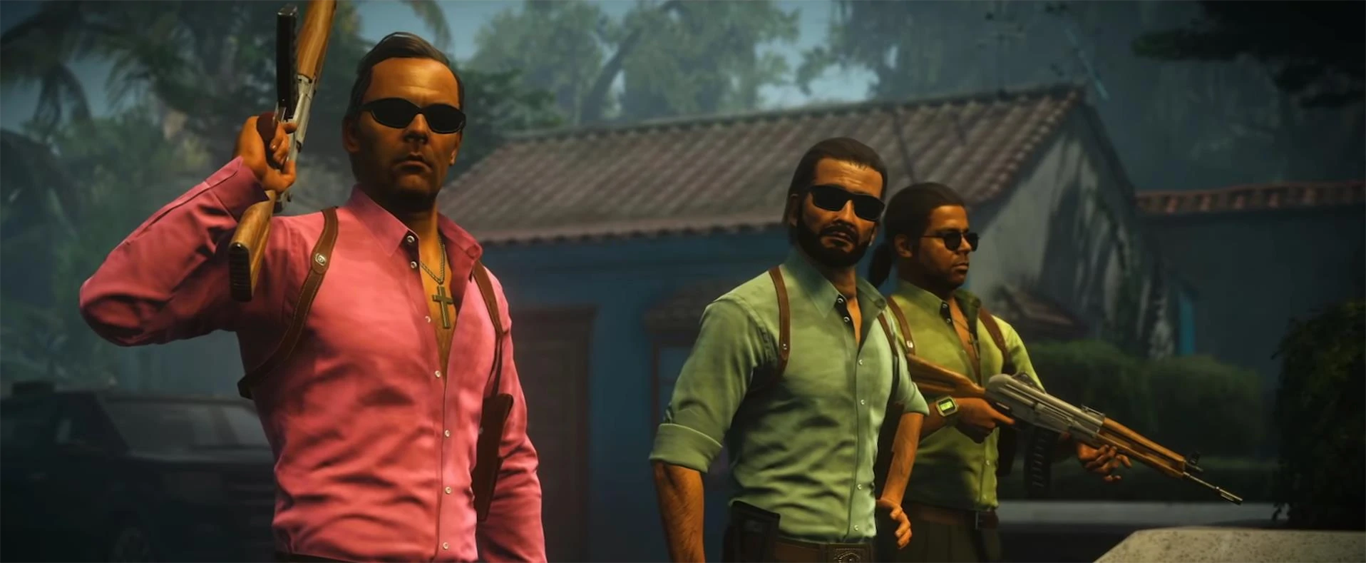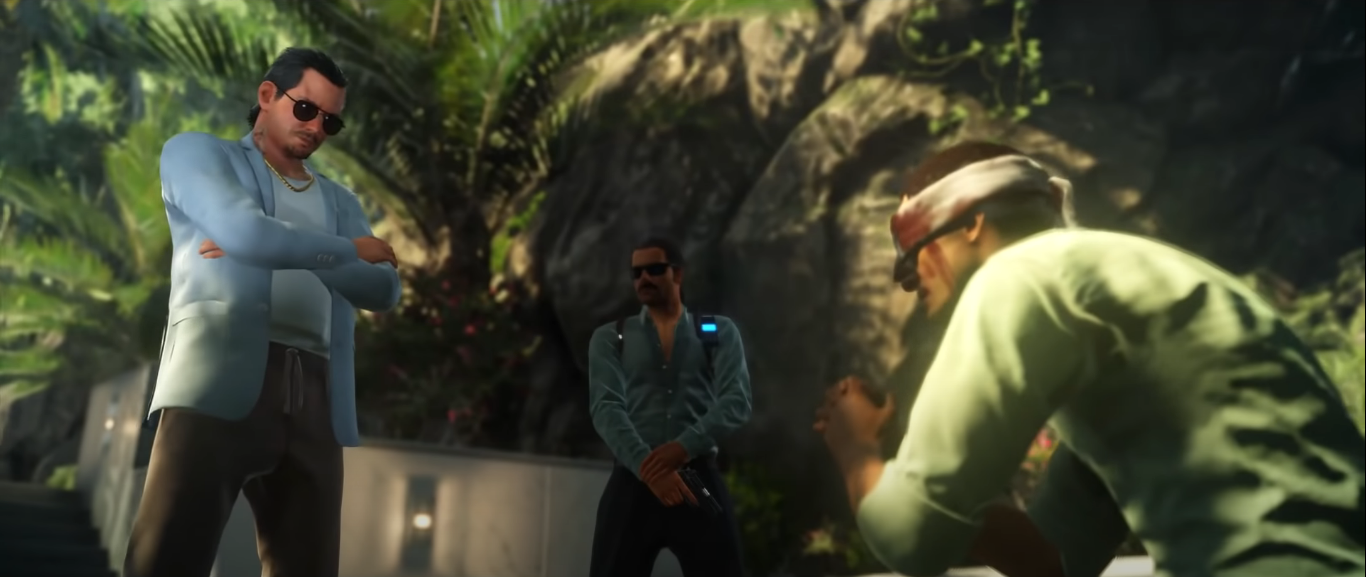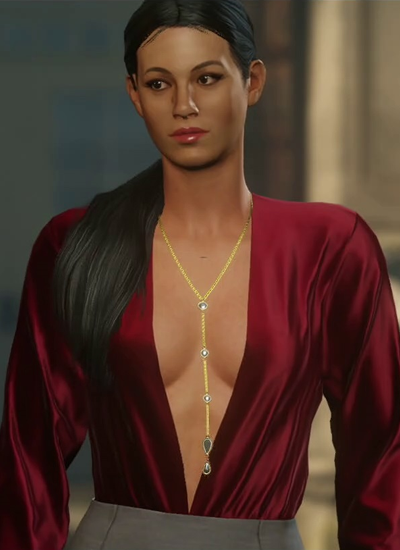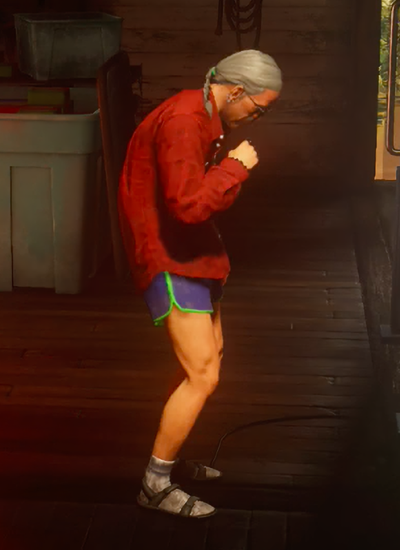
Middles are hard. The second outing in any trilogy faces a unique set of challenges for both the writer and fan. Narratively, it’s all movement, too far in to feel either the potential of the beginning or the climax of the end. Mechanic-wise, game sequels can end up stuck between players expecting innovation and ones who want more of the same. In my experience, no answer will please everyone. You take stock of what they liked last time, holster up, and do your best.
Hitman 2 does just that. It begins right where we left off, with 47 hot on the trail of his next contract. Now that we know Providence is out there, we can’t let them run around. It’s time to dismantle them the way we took down the Franchise, right? Wrong. Diana has accepted the deal the man offered her on the train: convince the ICA to help Providence, learn about 47’s past. In a different series, this might have split them like a rail spike, an ever-widening wedge of half-truths and disloyalty. Thankfully, Diana trusts him enough to be honest about it, and they express a shared hesitation about what they’re getting into. They know playing at Providence’s table is a Faustian game. They think the reward will be worth it. They’re about to find out how deep it all goes.
I think around now, the trilogy worries that it’s getting a little dark. So it brings out the mascot costumes and turns on the sun lamps. While Hitman 2’s cutscenes keep wrestling with corruption and conspiracy, its costumes become more dramatic, and its levels lean harder on humor. Some fans find this shift in tone dissonant, and I understand why. I don’t mind, though. After all, you don’t need to be dark to be grim. Hitman has always toed the line between goofiness and gravitas, and with villains this powerful, it’s hard not to relish an extra spoonful of satire. We’re not losing sight of the danger around us. If anything, it shows that our enemies are working harder to hide it. Which means we’re getting close.

47’s first operation under the Providence flag takes us to the stormy, windswept shores of Hawke’s Bay. We may have killed Sean Rose, but the shadow client’s militia lives on - Sean’s ex, Alma Reynard, has taken charge of another cell. They’ve already attacked several bigwigs with ties to Providence, so we’ve come to Alma’s latest hideout to see what’s going on. We’re not here to take her out, though. For now, all Providence wants is for us to search for intel on who ratted them out to her. Sending 47 to snoop around a house seems like asking Humphrey Bogart to do a pickle commercial, but hey, what do I know. Providence cut him a check for it. Besides, we can’t rule out that they’re evaluating his - and Diana’s - willingness to obey.
When 47 makes his way inside, we find a perverse scene. The house is lived-in, but quiet. Too quiet. It’s deserted, in fact. The alarm gives cheerful readouts to the absent residents. A repairman leaves a phone message. The news plays for no one. Hitman expects us to infiltrate crowded spaces so often that encountering a truly empty one makes us even more nervous. As we creep into each room, we feel like the intruder that we are. Anyone could pop out at any minute. Contracts would be jealous of those chills.
Ratapewie brand rat poison, huh?
Until we search the garage and stumble upon a man and woman shot execution-style, and the mission turns on its head. Immediately, we spot a pro’s touch. Chloroform and rope in the van. A plastic sheet beneath their chairs to help contain the mess. Later, if we listen to some grave-digging guards, we hear that Alma only planned to knock them out until the husband saw her face. If we hadn’t snooped around, we wouldn’t know any of that. We would’ve thought she’d just stepped out. Nothing would’ve seemed amiss.
47 assumes they’re the real owners. Diana says they’re not. This actually is Alma’s safehouse. The dead couple could be anyone. Alma and her new boyfriend, Orson, have stolen their identities, and they’re busy posing as them at a soirée as we speak. There’s a reason I’m taking so much time to summarize the plot: if it’s starting to seem familiar, it’s because she works like us. 47 specializes in leaving untouched scenes like these, with targets’ bodies stashed in inconspicuous places. Every Hitman player has had a level turn for the worse when a bystander blew our cover and forced us to kill them. How many times have we infiltrated a party in disguise?! It’s like Alma’s been studying Agent 47’s MO.
As soon as we find the intel we need, Alma’s motorcade pulls up. So Diana makes a snap decision. We’ve got what we came for. Let’s kill her. Providence was going to ask us to sooner or later. When it comes to the shadow client, we need to stay a step ahead. Alma officially becomes a target, and with all this buildup, we know IOI wants us to pay close attention to when she appears. Lo and behold, when Alma makes her grand entrance, she’s wearing… a black military-chic dress and jacket with a red beret. IOI, you sly dogs. You put her in 47’s colors, didn’t you?
To be clear, I don’t think Alma’s copied him on purpose. She’s a veteran assassin herself, and her outfit holds other nods to her background - the structured, uniform-like jacket and belt, the Basque headwear. But the series has so hard-coded red and black as 47’s colors by now that the player makes the connection without realizing it. In her (presumably) pilfered outfit, Alma bolsters 47’s core theme: people will let you in anywhere if your clothes display the right symbols. Between that and the intel that she specializes in disguise, IOI has introduced her to us as a potential peer. This is the caliber of opposition that we have to look forward to. As the tutorial shows us the ropes, it warns us not to get too confident.

Now that we know who Alma was in contact with, Providence sends us back across the date line to take care of them. Robert and Sierra Knox, the heads of Kronstadt Industries, have defected and offered the shadow client access to their empire. Kronstadt is a world leader in military R&D, and the shadow client could do serious damage with their weapons on his side. For a group like Providence, that’s not the problem. The real problem is that they’ve broken rank, so, as Diana says, “our contract obligates us to retire [them].” That’s a curiously load-bearing verb to use in a briefing. She’s skeptical about the assignment, and she’s right to be. Using us to punish Providence members who try to leave? This already feels iffy. But a contract’s word is bond.
As soon as we arrive at the Global Innovation Race, IOI smacks us in the face with color: pink flamingos, bright racecars, clear sky. It heralds the shift in tone that I mentioned earlier, and it’s a clue that they’re going to keep having fun with color theory. Away from the tents and hubbub, we find Robert, the CEO, who roams his huge headquarters like a man with something to hide. He’s paired his blue suit with a Kronstadt turtleneck - you know, in case we forget whose company it is - and another one of those origami lapel pins.
Blue is a good suit color for a man in the public eye. CEOs wear it. Presidents wear it. It’s calm. It’s steady. It’s official. You know who else we’ve recently seen wearing one? The man on the train. Apart from the turtleneck, Robert has copied his outfit to a tee. It looks, well, Providence-y, glaringly so, as if Robert is trying to maintain a facade until the shadow client’s deal goes through. Does he know Providence is onto him? I think not, but he’s afraid of it. He just needs to look loyal for a little longer, and then he can escape.
Sierra, Robert’s daughter, seems less concerned about all of that. As the driver representing Kronstadt in the race, she’s here to win big and go out in a blaze of chili shots. She’s geared up in a bright red racing suit with biometric sensors inside - a state-of-the-art advantage, and totally against the rules. Apart from the bells and whistles, the suit seems like a standard design. Red is Kronstadt’s color, and you always coordinate with your car.
Of course, red also brings to mind hot blood, passion, anger, an anger that bubbles up whenever her father’s in the frame. Sierra and Robert spend most of their time on different sides of the map, but when they meet, she can barely speak to him without a snip in her voice. She’ll threaten a blackmailer to protect her father’s image, then - according to one screenshot - dump Robert’s body if she finds him dead. This may be for good reason: Robert has tampered with her suit. It’s microdosing her with adrenaline, and she has no idea. In a literal twist, the suit could actually be making her more aggressive toward him, adding fire to their already-acrimonious feud.
With the two side-by-side, we see what their colors really mean: red and blue, irreconcilable opposites, different teams. Robert and Sierra have more drama than a Lifetime movie. He’s resented her since she was born, and she’s obsessed with outdoing him. Sierra may have inherited her father’s ruthlessness, but they’ll never see eye to eye, and that will cost them both their lives. United, they could have pooled their resources and disappeared. Because they’re divided, 47 can isolate and eliminate them. If there’s anything we learn from the Knoxes, it’s that once you betray Providence, you can’t afford infighting. You need all the allies you can get.

The shadow client, apparently, is smart enough to understand that. Or rather, “Lucas Grey,” because now, we know his name. Diana has not only uncovered the shadow client’s identity, she’s figured out how his militia has been moving around in secret. They’re working with - of all people - the Delgado Cartel, following their distribution lines and passing through borders unseen. If we behead the cartel, the militia won’t be able to use their network. And since we’ve been given a blank check to stop them, that’s where we’re headed next.
As I mentioned in the introduction to the reboot, 47 has been working long enough now to affect the underworld landscape. Hitman 2 brings that into focus in Santa Fortuna, where the situation is a direct result of one of his previous jobs. Remember A Vintage Year? Of course you do. Blood Money’s Chilean trip to kill drug lord Fernando Delgado has become one of the series’ most venerated missions. Fourteen-ish years on, we’ve come to Colombia for his nephew, Rico, who assumed the throne in the vacuum that followed his father and uncle’s deaths. The situation we hoped to change has pretty much stayed the same, and we realize what else the level’s name is alluding to. Like the Hydra, if you cut off one head, another grows in its place. We’ve challenged a cycle of power that even 47 can’t break.
Because of A Vintage Year’s status in the Hitman pantheon, Fernando casts a long shadow over players’ memories. It’s hard for series veterans to see Rico without at least subconsciously comparing him to his uncle. He has big shoes to fill. So how does he measure up? Well, when we meet him, he’s chosen a strange look: a blazer with an undershirt, sweatpants, and flip-flops. It doesn’t exactly portray the cartel as a serious enterprise, does it? Safe to say they’ve let their hair down since Don Fernando’s day.
On the one hand, it could show that Rico’s trying to modernize the cartel, forgoing stuffy tradition to bring things into a new age. Or he could have dressed casually for his tattoo appointment, then thrown the blazer on to remind everyone who’s boss. But I think we’re seeing a man who’s become complacent about his empire, because he’s seen that the system is unlikely to topple for good. He feels no need to appear powerful on a day-to-day basis. He even grows irritated when his bodyguard tries to protect him. These aren’t the actions of a man who worries that he’s under threat. His gaudy statue will stay up, and the institution will persevere.
Andrea Martínez doesn’t have the luxury of sweatpants. As the face of the cartel, she needs to put her best foot forward when it’s time to extort a local official or bribe the police. Or, not her foot, precisely. With her blouse cut down to the waist and her plunging necklace, her outfit practically screams “look at my chest.” It uses all the ingredients of a businesswoman’s attire, but adds a flash that the mundane business world would see as unprofessional. She’s not playing to them. The cartel business is all about what you can flaunt, and as a former marketing executive, she knows that sex sells. If I had to guess, I’d say that Andrea spends a lot of time around a certain kind of man, and she’s learned that a low-cut top can facilitate a deal. In the complicated debate around revealing video game clothes - and boy, Hitman’s been through it - Andrea shows that you can do it with a purpose.
But these operations don’t run unless they have good product in the first place, which means a force behind the scenes controlling the coca itself. The Delgado Cartel has Jorge Franco, Fernando’s old chemist, providing both new recipes and a link to the old regime. In theory, those two factors should give Jorge a lot of clout, and given his history, we might expect him to look more traditional. Instead, he roams the lab in tiny bike shorts and… oh, socks with sandals, it hurts. What happened to “dress for the job you want?”
Unless this is the job he wants. We’ve had so many targets who chase power at all costs that we’re not used to seeing one who doesn’t covet it, or at least doesn’t dress like he does. If you think about it, Rico needs someone like Jorge most of all - a man with no interest in ever trying to usurp him. In sidestepping direct authority, Jorge has given himself the power of usefulness. Hold onto that. We’re about to see it subverted to the extreme.


